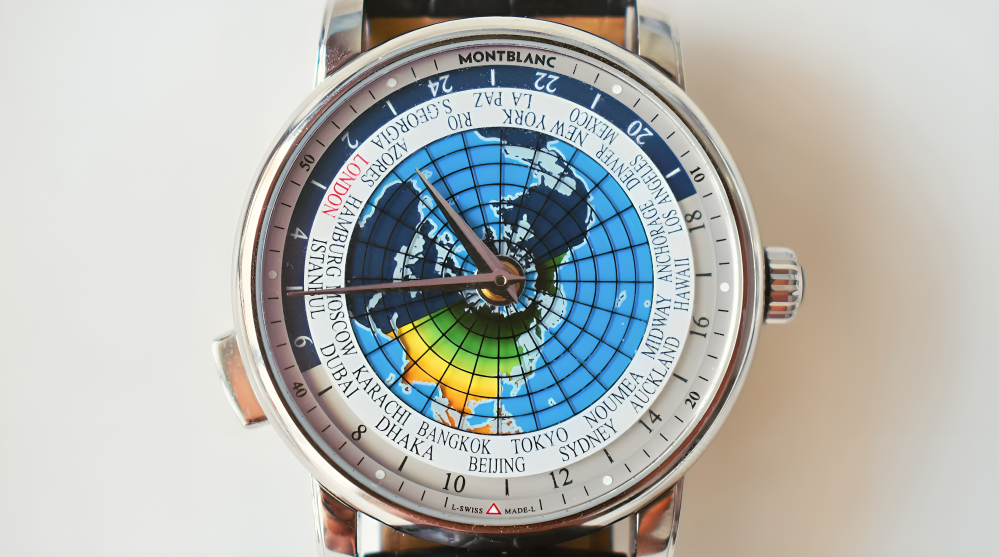Watches, besides their utilitarian function of telling time, also offer breathtaking examples of engineering and craftsmanship. One of the fundamental ways watches differ is by their movement, which refers to the mechanism that keeps time. In this article, we delve into the details of the three major types of Watch Movements: Mechanical, Quartz, and Automatic.
1. Mechanical Watch Movements:
- Traditional Artisanal Work: Mechanical movements are the oldest form of watch movement and date back several centuries. They function purely mechanically, without any dependency on batteries or electronics.
- Major Components: A mechanical movement includes a mainspring, gears, and an escapement mechanism. The mainspring is wound manually in manual watches or through the motion of the wrist in automatic watches.
- Complexity and Craftsmanship: Mechanical movements are characterized by their intricate designs and craftsmanship. Many feature visible gears and components through a transparent case back, inviting appreciation of their mechanical beauty.
- Maintenance: For accurate timekeeping and longevity, mechanical watches require regular maintenance, including periodic cleaning and lubrication.
2. Quartz Watch Movements:
- Accuracy: Quartz movements revolutionized the watch industry due to their high accuracy. They use the vibrations of a quartz crystal oscillator, which is electrically powered by a battery, to drive the timekeeping mechanism.
- Simplicity: Compared with mechanical movements, quartz movements are relatively simple and have fewer moving parts. This simplicity contributes to their durability and low maintenance requirements.
- Battery-Powered: Quartz watches do not use mechanical power like mechanical watches but are instead powered by batteries. These batteries need to be replaced approximately every one to two years.
- Common Usage: Quartz movements are found in most modern watches because they are inexpensive, accurate, and require minimal maintenance. They are used in everything from low-cost fashion watches to higher-end luxury brands.
3. Automatic Watch Movements:
- Self-Winding Mechanism: Automatic movements, also known as self-winding movements, blend the artistry of mechanical movements with the convenience of automatic winding. They feature a rotor that rotates with the motion of the wearer’s wrist, winding the mainspring.
- Best of Both Worlds: Automatic watches combine traditional mechanical craftsmanship with the added convenience of not requiring manual winding. However, like mechanical watches, they still require periodic servicing to maintain optimal performance.
- Mechanical Complexity: Automatic movements are more complex compared to quartz movements due to additional components required for the self-winding mechanism. This complexity often results in higher prices, especially in luxury watches.
Each watch movement—mechanical, quartz, or automatic—offers its own set of distinct qualities, catering to various preferences and needs. Mechanical movements are esteemed for their deep-rooted tradition and exceptional craftsmanship. These movements feature intricate gears and springs that showcase the artistry of watchmaking. Mechanical watches are celebrated by enthusiasts who value the meticulous skill and dedication involved in their creation. The craftsmanship involved in mechanical movements reflects a timeless art form, where every component is carefully assembled to ensure precision and durability.
In contrast, quartz movements are renowned for their unparalleled precision and affordability. Utilizing a battery-powered oscillator, quartz watches offer accurate timekeeping with minimal maintenance. This makes them an ideal choice for those who prioritize reliability and simplicity. The ease of upkeep and the precision of quartz technology have made these timepieces a practical and popular option for everyday use.
Automatic movements, on the other hand, represent a harmonious blend of traditional mechanical artistry and modern convenience. These movements combine the intricate craftsmanship of mechanical watches with the self-winding feature powered by the wearer’s wrist motion. This fusion allows automatic watches to retain the elegance and complexity of mechanical timepieces while providing the practicality of a battery-free design. Automatic watches are favored by those who seek a balance between sophisticated craftsmanship and ease of use. Understanding these different movements enhances your appreciation for horology, revealing the unique advantages and characteristics each type of movement brings to the realm of timekeeping.

